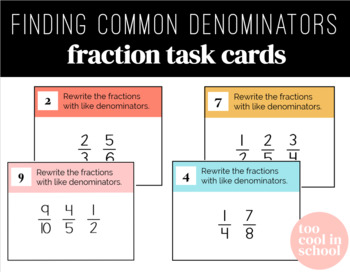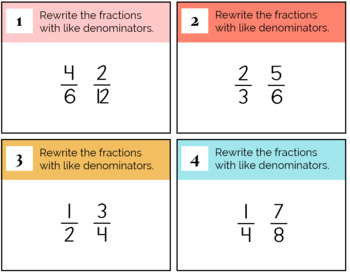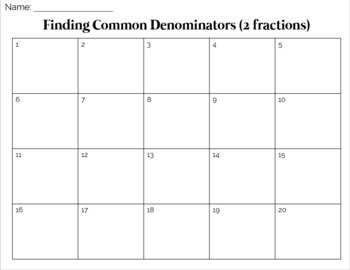Finding Common Denominators Fraction Task Cards
What educators are saying
Description
Are your students struggling working with fractions with unlike denominators? Then these task cards will be a HUGE help in your classroom! When I was teaching fractions I found that lots of my students struggled to find common denominators when adding and subtracting fractions, so I created these simple task cards to isolate that skill. They are great for centers, and you can have all students do both sets of task cards, or use the two sets to differentiate as needed.
Included in this resource:
- 20 find the common denominator task cards with 2 fractions
- 20 find the common denominator task cards with 3 fractions
- Two answer sheet options, one with all 20 on one page, and one with 1 page for those students who write larger/need more space
***UPDATE***
Colors, fonts, and style have been updated in the newest version. Also has some small number changes on more difficult task cards.




